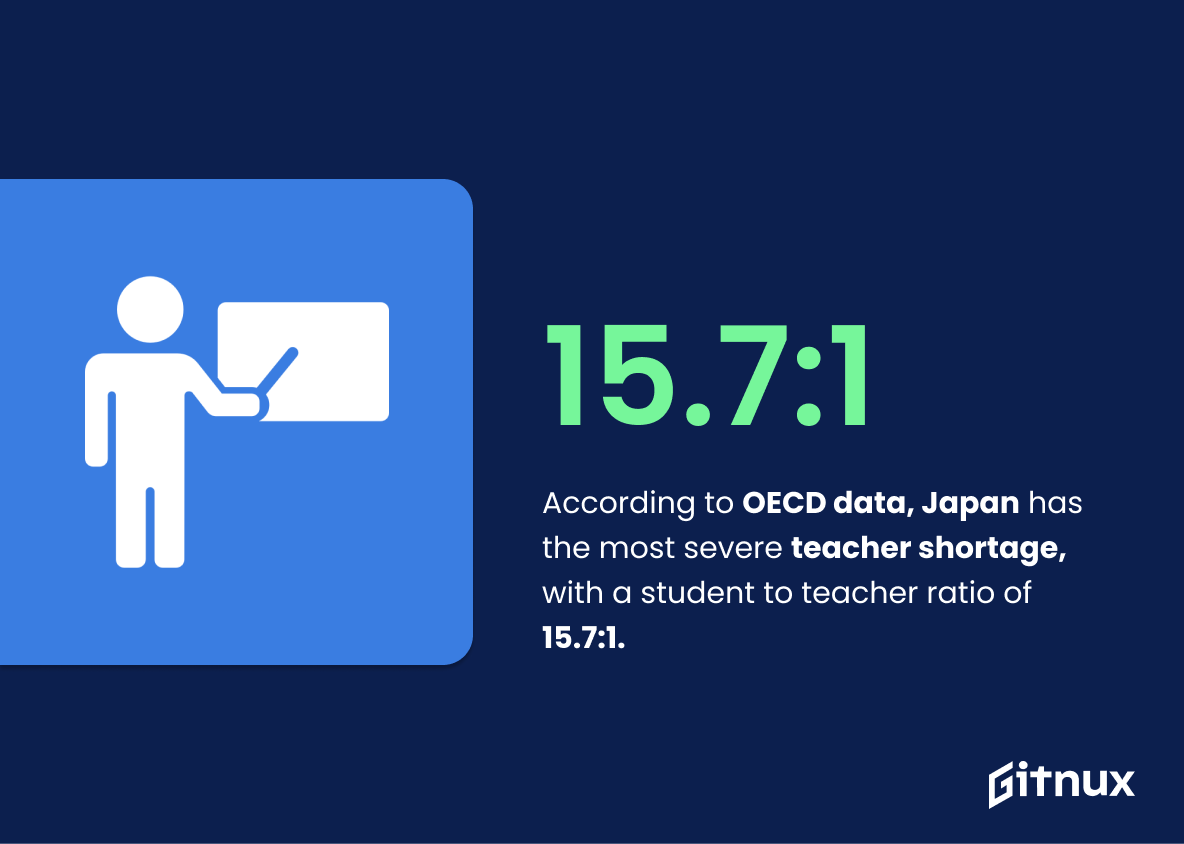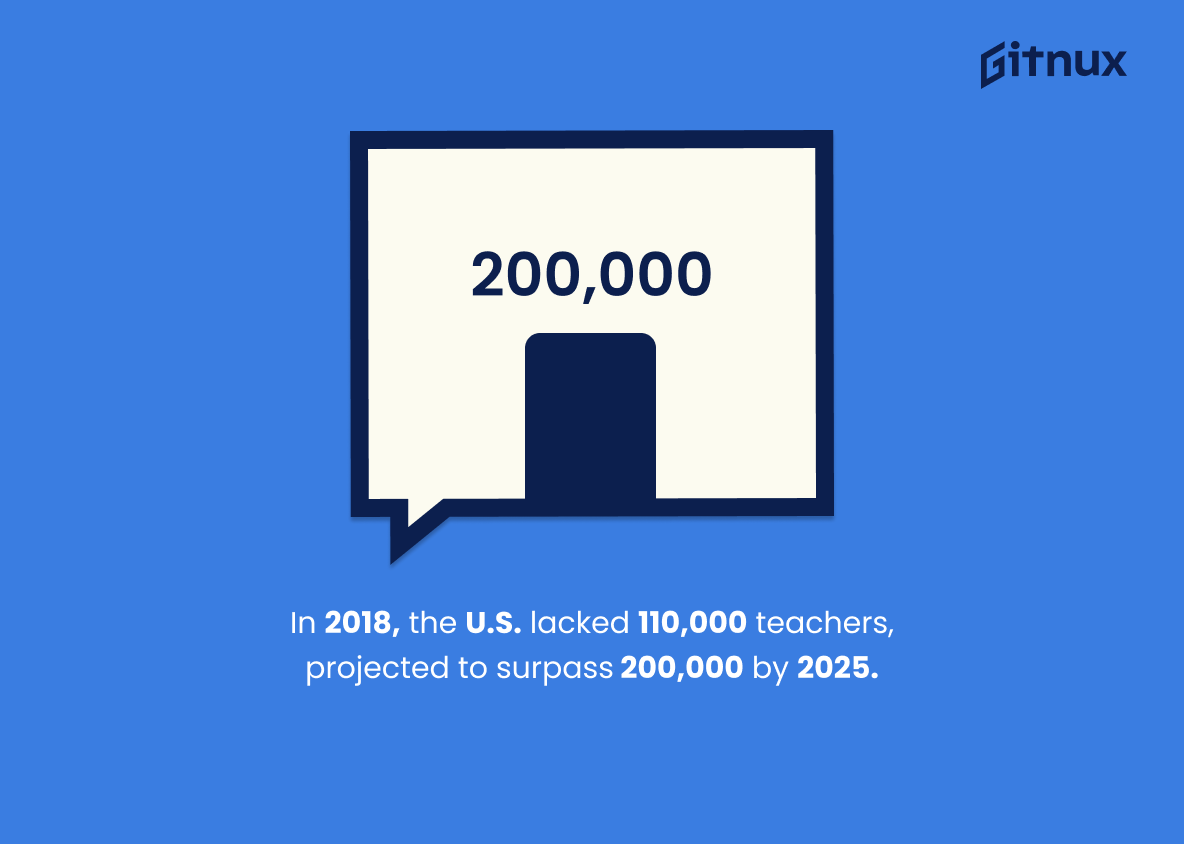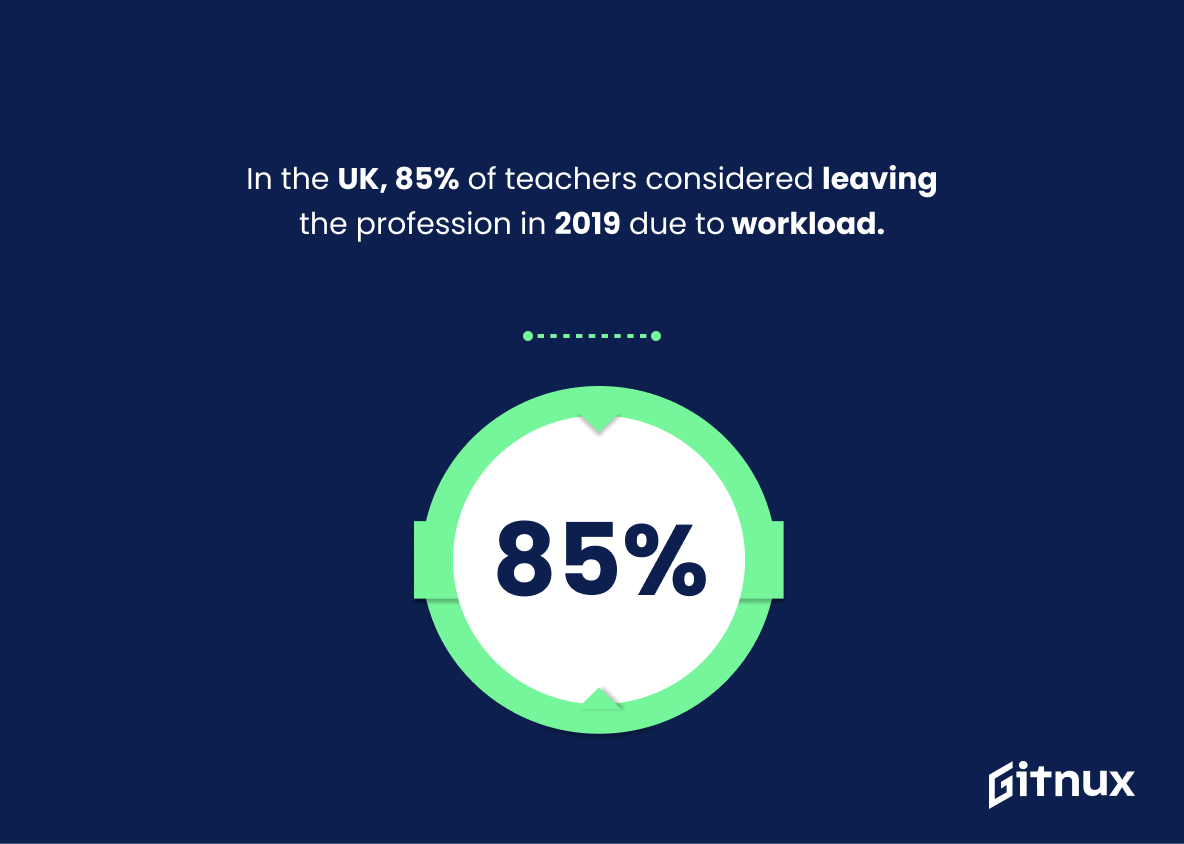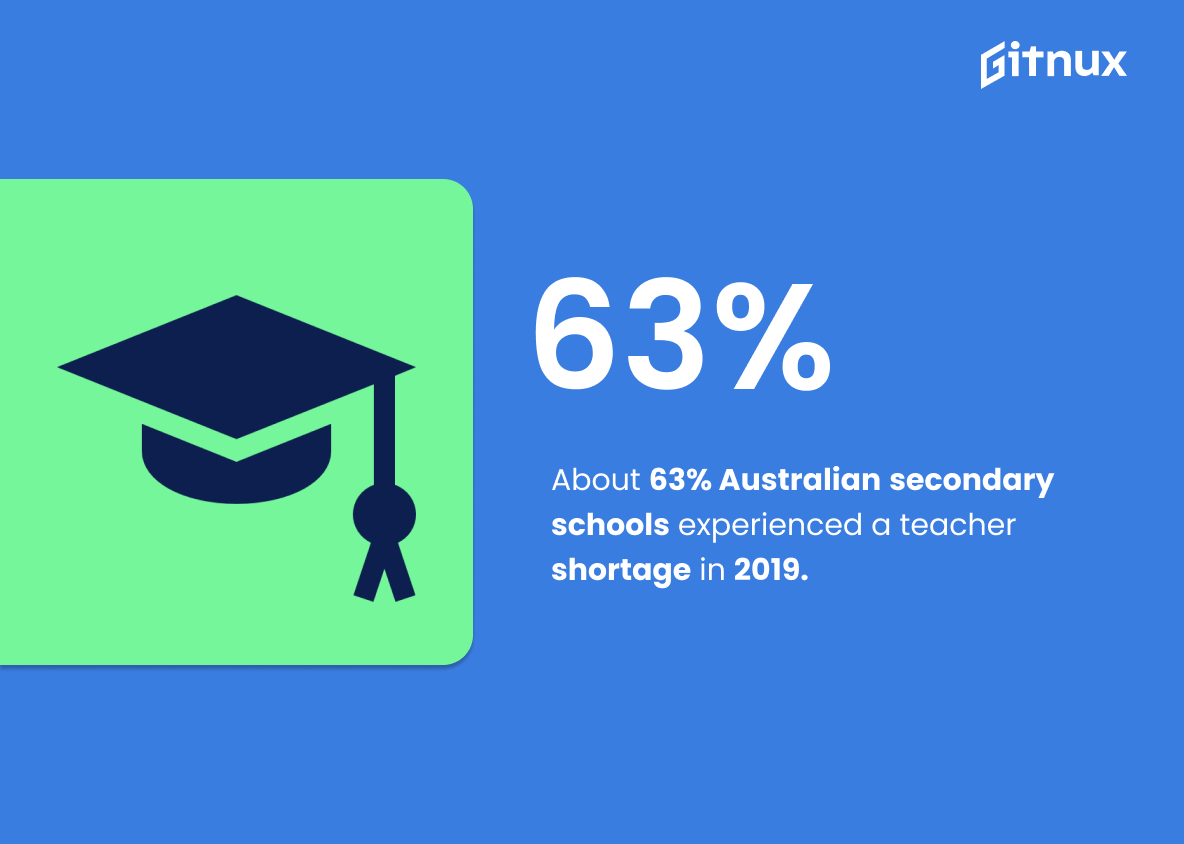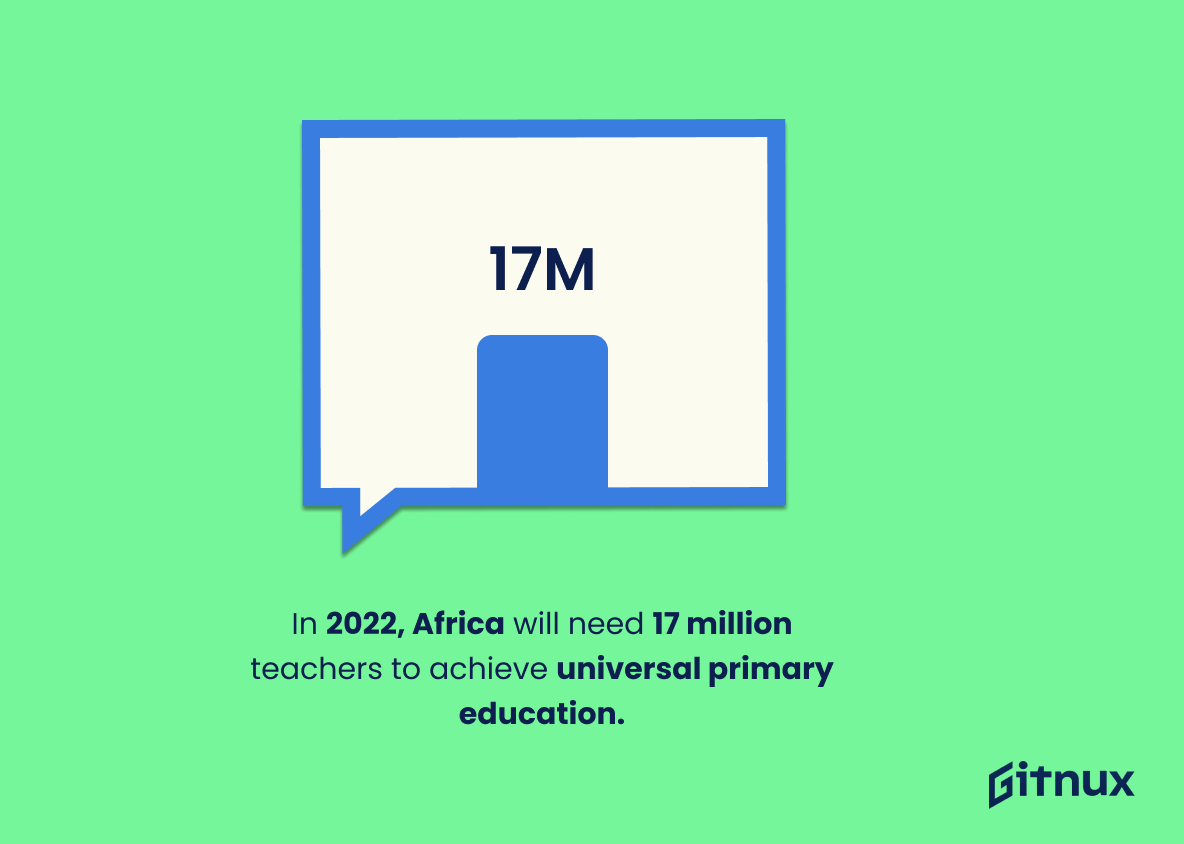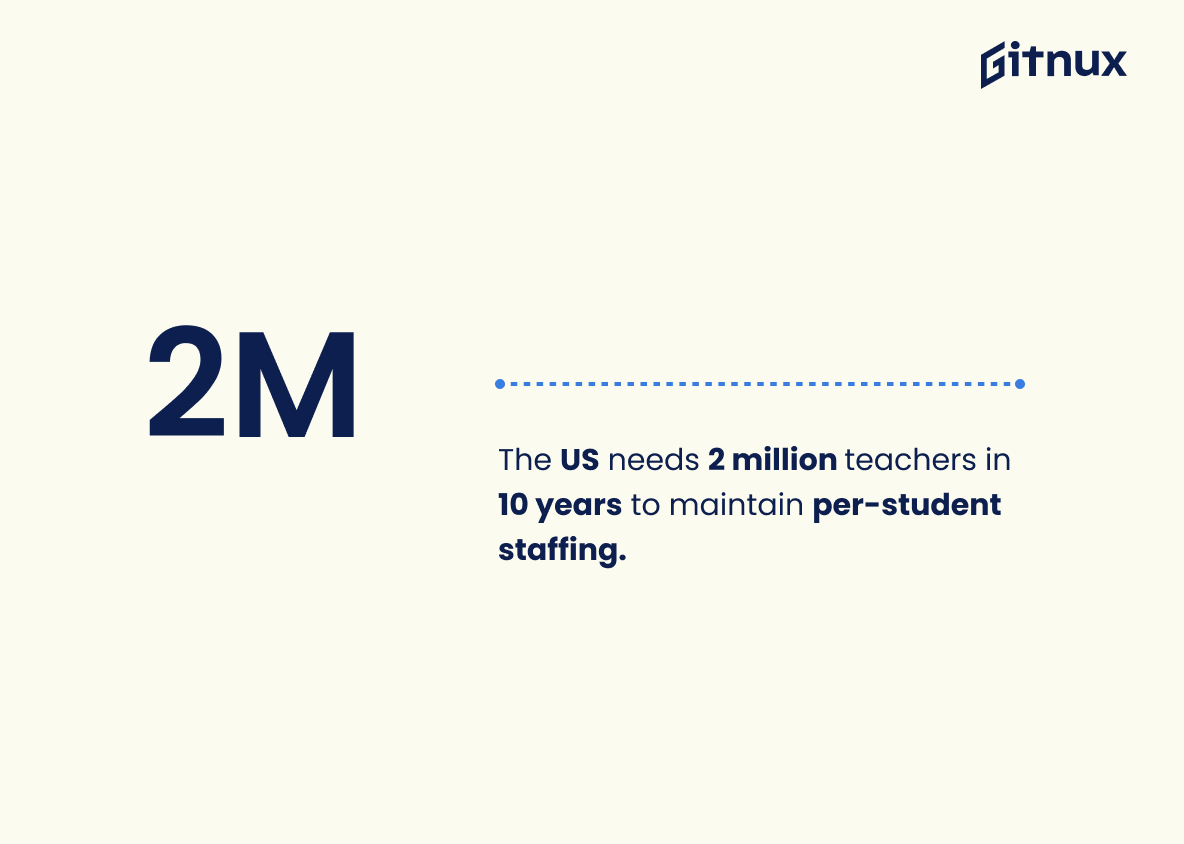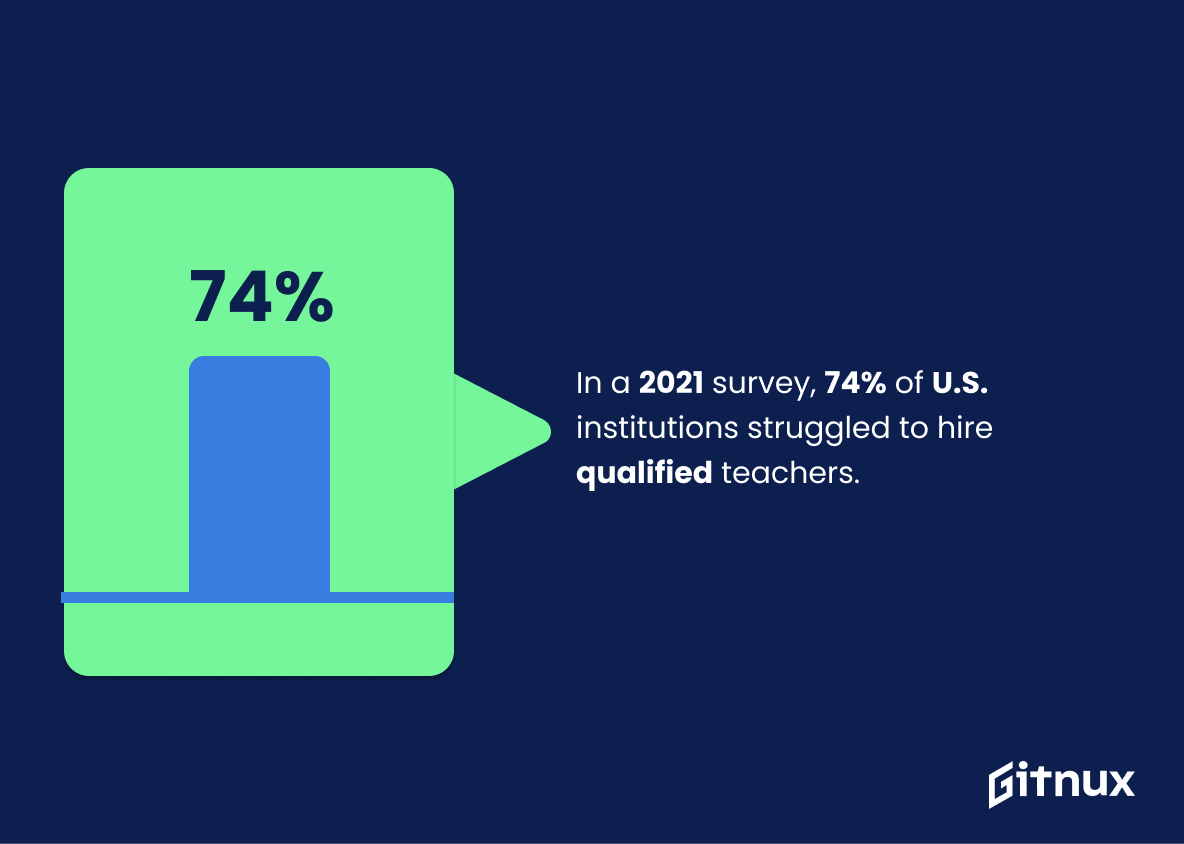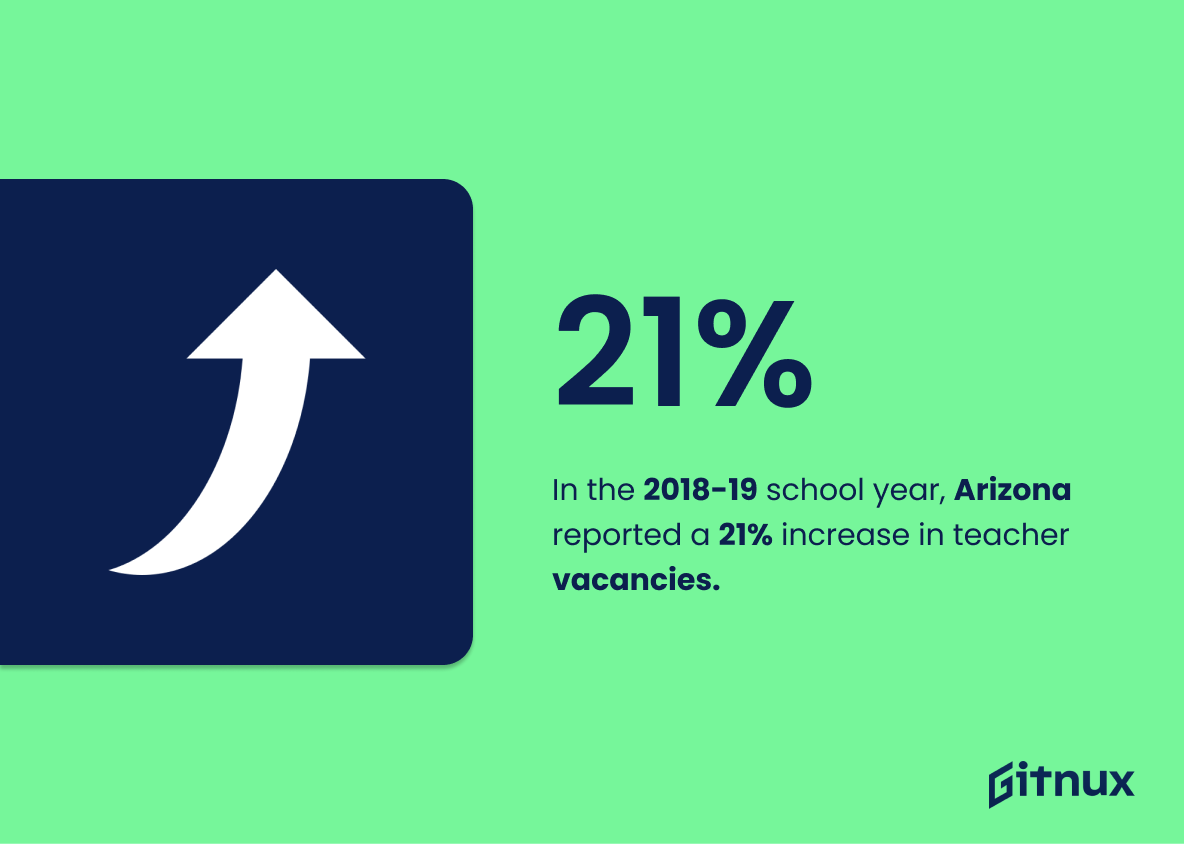As we delve into the world of education, one alarming trend that seems to persist on a global scale is the shortage of teachers. Our blog today undertakes an analytical journey, exploring teacher shortage statistics, unravelling the causes, implications, and potential solutions. In a society where teachers play an imperative role in shaping future generations, this is not an issue that can be taken lightly. Increasing classroom sizes, high teacher turnover rates, and gaps in subject specialties are all symptoms of a deeper problem, which our thoughtful analysis will tackle head-on. Buckle up for an informative expedition through the numbers and narratives behind the growing issue of teacher shortage.
The Latest Teacher Shortage Statistics Unveiled
According to OECD data, Japan has the most severe teacher shortage, with a student to teacher ratio of 15.7:1.
Highlighting OECD data that showcases Japan’s severe teacher shortage provides a critical, cross-cultural perspective on the global state of a subject usually examined in localized contexts. Specifically, the statistic directs attention to the stark reality of a 15.7:1 student to teacher ratio in Japan, the highest globally. This datum is more than a simple comparative snapshot. It underscores the magnitude of the issue and demands an in-depth analysis of the causes, effects and potential solutions. Embedding this global viewpoint engrosses a wider audience and sparks a dialogue on international educational policies, promising a comprehensive understanding of teacher shortage. Therefore, in the framework of a blog post focused on Teacher Shortage Statistics, this statistic enhances the narrative with compelling international evidence.
The Economic Policy Institute reported that the U.S. is short approximately 110,000 teachers in 2018, with projections of the shortage exceeding 200,000 by 2025.
Representing a harsh reality in the realm of education, the aforementioned statistic paints a disconcerting picture of the teacher scarcity in the U.S. Delving into the numbers, the Economic Policy Institute unveiled an unsettling revelation in 2018 – the U.S is grappling with a deficit of roughly 110,000 teachers. This isn’t just a snapshot of a temporary deficit, it’s the tremors warning of an impending shockwave. The projections are even grimmer, predicting the chasm to widen to more than 200,000 teachers by 2025.
Expressed in black and white, these numbers serve as stark reminders of the gargantuan challenges our education system is facing. At the risk of sounding dramatic, these numbers represent a ticking time bomb situated at the heart of our education. They impel us, as a society, to steer the narrative from ‘just numbers’ to ‘pressing issues’ within the context of teacher shortages.
In essence, this statistic embodies a silent plea for urgent, decisive action – a clarion call for significant policy changes, enhanced funding, improvement of teacher working conditions, and reevaluation of our societal attitude towards teaching as a profession. Simply put, these numbers underscore, in unequivocal terms, an imminent crisis that has the potential to significantly impinge on our collective future.
In 2018, 89% of low-income schools reported teaching vacancies and long-term substitutes, indicating teacher shortage.
Within the tapestry of Teacher Shortage Statistics we are weaving, the 2018 data depicting 89% of low-income schools reporting teaching vacancies and long-term substitutes is a potent thread. It signals a crisis development within an already concerning narrative: the persisting deficiency of teachers, particularly in less affluent educational environments. This percentage paints a stark image of classrooms without a consistent, qualified instructor at the helm, which could potentially hinder positive learning outcomes, setting up a cycle of mitigated educational achievement and continued poverty. This injects a sense of urgency into the conversation around teacher scarcity, fueling the need to deliberate on equitable solutions that address the shortfall but also close the equity gap among schools across different income strata.
By 2022, India may face a potential shortage of 200,000 teachers.
Highlighting the forecasted figure of a staggering 200,000 teacher deficit in India by 2022 makes a compelling case in the discourse around global teacher shortage. It not only underscores the urgency and magnitude of the problem in one of the world’s most populous countries, but also helps to stimulate conversation on the implications for educational quality, the future workforce, and the broader societal impact. This startling prediction plays a pivotal role in shaping the narrative and broadening the readers’ perspective on teacher shortage statistics, rendering the issue tangible and hard to ignore.
In the UK, 85% of teachers considered leaving the profession in 2019 due to workload.
Draping the essence of this figure into the fabric of our discussion, it exudes a stark warning about the potential exodus of professionals from the teaching field in the UK. Inlight of a concerning 85% of educators mulling a switch from their vocation in 2019, primarily induced by an overwhelming workload, the issue of teacher shortages transforms from a mere concern to an impending crisis. This concern is aggrandized, as it’s not mere number churned out of a calculation, but a reflection of the colossal stress harbored by the primary agents of knowledge-transmission, threatening the core of the education system. Hence, when we delve into teacher shortage statistics, this significant statistic underscores the criticality and urgency of addressing the issues that compel so many teachers to contemplate departure.
About 63% Australian secondary schools experienced a teacher shortage in 2019.
To delve into the heart of teacher shortage realities, consider the startling figure that close to two-thirds of Australian secondary schools faced this issue in 2019 alone. This revelation not only amplifies the extensive scale of the problem, but also unravels the potential ripple effects it might have on the quality of education. Imagine a landscape where over half of the schools are struggling to staff classrooms adequately; it lays bare the strains on existing teachers and risks compromising the learning opportunities for students. Moreover, it accentuates the urgency for systematic interventions to attract and retain teachers in Australia. Thus, this figure serves as a compelling centerpiece in a blog post focused on teacher shortage statistics.
In 2022, Africa will need 17 million teachers to achieve universal primary education.
Underlying the figures of ’17 million teachers needed in Africa by 2022 to achieve universal primary education’, we are compelled to unpack a pressing narrative about global teacher shortage. From this vista, Africa lands in the epicenter of the issue. This statistic is a rallying call, an urgent bell tolling for an educational renaissance, as it unveils not only the enormity of teacher-demand in the continent, but also sets the stage for exploring the systematic and structural hindrances preventing the attainment of universal primary education.
The statistic doesn’t just graphically hallmark the magnitude of the challenge, but also highlights prospects of creating millions of teaching jobs, auguring well for employment rates while simultaneously proving a bane to illiteracy and under-education. Thus, it is both a forewarning and unmissable signal of untapped opportunities poised to bring about social, economic and cultural transformations. In the framework of Teacher Shortage Statistics, this particular statistic provokes curiosity, incites dialogues and stimulates action towards global education equity.
The United States will need to hire 2 million teachers over the next 10 years to maintain current per-student staffing levels.
Painting a vivid picture of the enormous educational landscape in the United States, this striking statistic highlights the paramount urgency of addressing the teacher shortage problem. Not only does it ring alarm bells for the present situation, but it also casts a long shadow over the next decade, signaling potentially harsh consequences if no corrective measures are taken. With the overwhelming need to recruit 2 million teachers to simply uphold the existing per-student staffing levels, this figure is pivotal in initiating dialogue, defining policies, and inciting action aimed at stabilizing this shaking pillar of our educational structure.
In a 2021 survey, 74% of U.S. educational institutions were finding it ‘difficult’ or ‘very difficult’ to recruit and hire qualified teachers.
Illuminating a concerning trend in the educational landscape, the 2021 statistic revealing that 74% of U.S. educational institutions find recruiting and hiring qualified teachers either ‘difficult’ or ‘very difficult’, serves as an alarm bell. This underlines the magnitude of the teacher shortage problem that the nation is facing. Equipped with this data in a blog post about Teacher Shortage Statistics, readers will be ushered into the stark reality of the crisis, and therefore can begin to appreciate the urgency and importance of finding viable solutions. The statistic underscores the struggle that schools are enduring, highlighting the scarcity of available talent and underlining that action must be taken swiftly to steady this educational imbalance.
In New Zealand, there may be a shortage of around 1,000 teachers in 2020.
The gripping revelation of an impending shortage of approximately 1,000 teachers in New Zealand by 2020 is a focal point in any discussion on teacher shortage statistics. This forewarning is not merely numerical data; it’s a clarion call demanding immediate measures to attenuate the potential repercussions for the educational ecosystem. Reflecting on this fact arms us with insight into an imminent crisis; it creates a compelling argument for the urgency of addressing teacher recruitment and retention in a country where the education system is considered pivotal. The number ‘1000’ is not just about scarcity. It represents a thousand classrooms with compromise on educational quality, a chasm needing to be filled, and a looming disruption in the learning experience of future generations.
In the 2018-19 school year, Arizona reported a 21% increase in teacher vacancies.
Drawing attention to Arizona’s reported 21% increase in teacher vacancies during the 2018-19 school year offers a stark illustration of the escalating teacher shortage crisis. It underscores that the phenomenon is not just a nationwide issue but also varies in intensity across different states. When paired with other relevant data, such as student-teacher ratios and education budgets, this alarming rise in vacancies can paint a comprehensive picture of the challenges educators and students in the Grand Canyon State are grappling with. Consequently, Arizona’s case can serve as a springboard for discussions on potential solutions to tackle the ongoing teacher shortage.
As of 2020, 55% of teachers in Italy are over 50, posing a future teacher shortage risk.
This intriguing projection paints a picture of an impending problem in Italy’s educational landscape. The fact that over half of Italian teachers are aged 50 and above signifies that a substantial portion of the teaching workforce is nearing retirement. This scenario unveils a worryingly skewed age distribution among Italy’s educators, raising pressing questions about teacher availability in the near future. In the context of a blog post about Teacher Shortage Statistics, this insight spotlights Italy as a potential hotbed for teaching shortages, hence adding a vital international perspective to the discourse, and contributing to our understanding of the global severity of teacher shortages.
Conclusion
In wrapping up, it is evident from the overwhelming statistics that the issue of teacher shortage is a persistent and growing concern. It is a disrupter not only to the education system, but also shapes the future of our society. Understanding these statistics help us recognize the magnitude of the problem and makes clear the urgent call to action. It’s high time we collectively address this issue by investing in education, valuing our educators, and creating an environment conducive to their growth and satisfaction. The future generation’s success primarily depends on the quality of education they receive, and at the heart of that quality, are our teachers.
References
0. – https://www.www.theguardian.com
1. – https://www.www.teachermagazine.com
2. – https://www.nepc.colorado.edu
3. – https://www.www.business-standard.com
4. – https://www.www.nctq.org
5. – https://www.gem-report-2016.unesco.org
6. – https://www.www.rnz.co.nz
7. – https://www.nces.ed.gov
8. – https://www.www.aasa.org
9. – https://www.azednews.com
10. – https://www.www.epi.org
